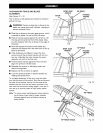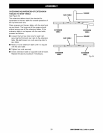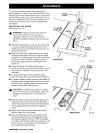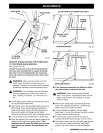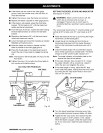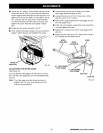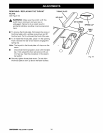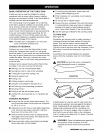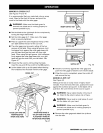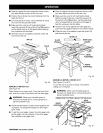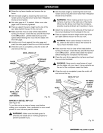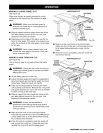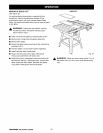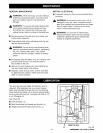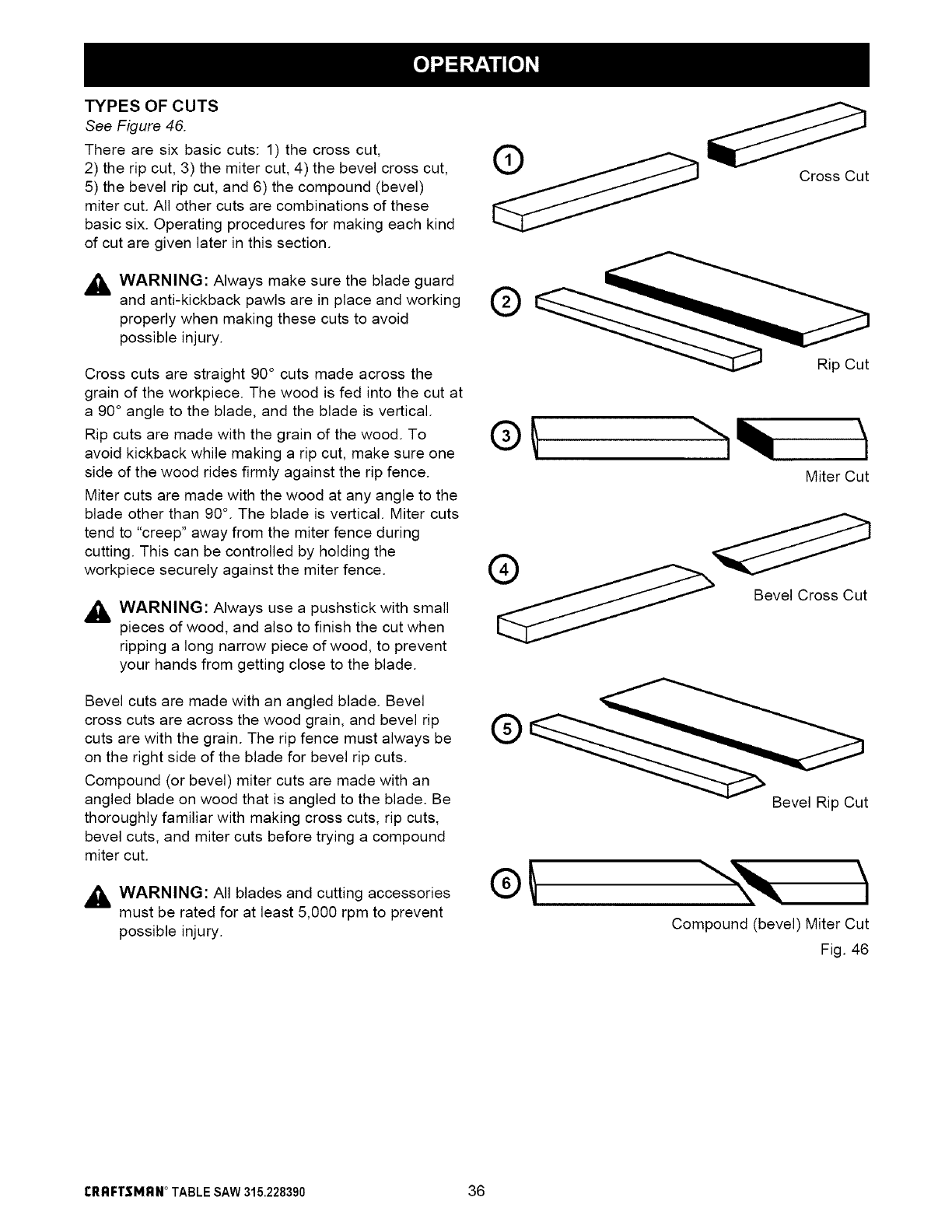
TYPES OF CUTS
See Figure 46.
There are six basic cuts: 1) the cross cut,
2) the rip cut, 3) the miter cut, 4) the bevel cross cut,
5) the bevel rip cut, and 6) the compound (bevel)
miter cut. All other cuts are combinations of these
basic six. Operating procedures for making each kind
of cut are given later in this section.
_lh WARNING: Always make sure the blade guard
and anti-kickback pawls are in place and working
properly when making these cuts to avoid
possible injury.
Cross cuts are straight 90° cuts made across the
grain of the workpiece. The wood is fed into the cut at
a 90° angle to the blade, and the blade is vertical.
Rip cuts are made with the grain of the wood. To
avoid kickback while making a rip cut, make sure one
side of the wood rides firmly against the rip fence.
Miter cuts are made with the wood at any angle to the
blade other than 90 °. The blade is vertical. Miter cuts
tend to "creep" away from the miter fence during
cutting. This can be controlled by holding the
workpiece securely against the miter fence.
,_ WARNING: Always use a pushstick with small
pieces of wood, and also to finish the cut when
ripping a long narrow piece of wood, to prevent
your hands from getting close to the blade.
Bevel cuts are made with an angled blade. Bevel
cross cuts are across the wood grain, and bevel rip
cuts are with the grain. The rip fence must always be
on the right side of the blade for bevel rip cuts.
Compound (or bevel) miter cuts are made with an
angled blade on wood that is angled to the blade. Be
thoroughly familiar with making cross cuts, rip cuts,
bevel cuts, and miter cuts before trying a compound
miter cut.
,_ WARNING: All blades and cutting accessories
must be rated for at least 5,000 rpm to prevent
possible injury.
Cross Cut
Rip Cut
Miter Cut
Bevel Rip Cut
Compound (bevel) Miter Cut
Fig. 46
rRRFTSMRN * TABLESAW315.228390 36



